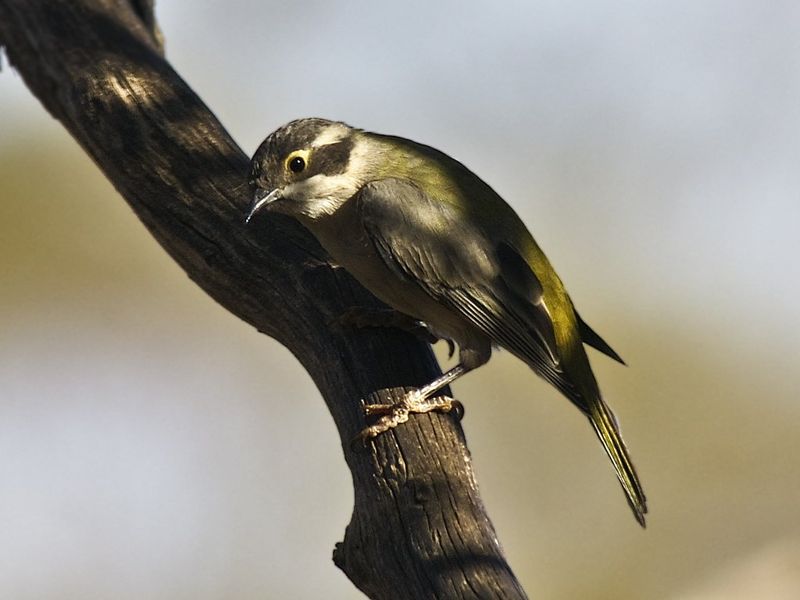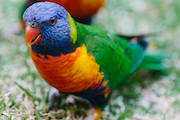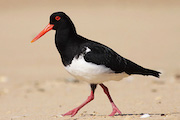Brown-headed honeyeater
This small, green-backed and brown-headed honeyeater measures up to just 15 centimetres. It is a predominately soft brown colour above and off white below, with a creamy yellow to orange eye-ring and a short slender bill.

Where
Look for these small honeyeaters in forested and heathland areas - try the forested sections of the headland walks. Spring time on Heath Trail in the Botanic Gardens is also a good place to catch a glimpse. You’ll often see flocks of these birds moving like acrobats through the heath, searching for insects and nectar.
Feeding
Whilst these birds belong to the honeyeater family, they are predominantly insect eaters. Look for groups of five or more picking insects from tree branches, leaves and flowers and under bark. Look also for flocks foraging high in the tree canopy.
Breeding
The nest is a fairly deep construction of grass, bark and hair or fur from live animals and can be found in the outer foliage of trees. The brown-headed honeyeater will breed cooperatively if helpers are available, with up to five birds helping the breeding pair to incubate the eggs and feed the young. Young birds will probably remain with the family group from year to year.
Sounds
Calls include a cheeping while in flight, and a ti ti ti alarm call. It also makes a scratchy chwik-chwik-chwik call.
Stay in touch
Subscribe to receive important updates about Booderee National Park.




